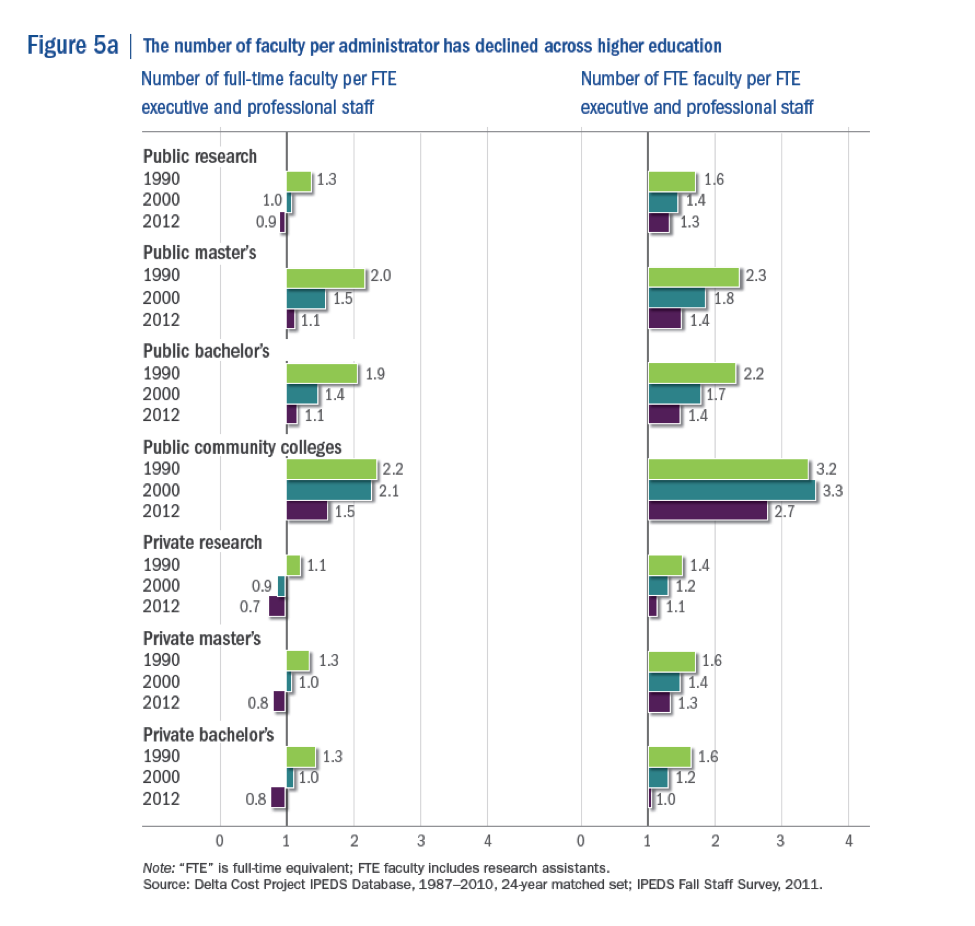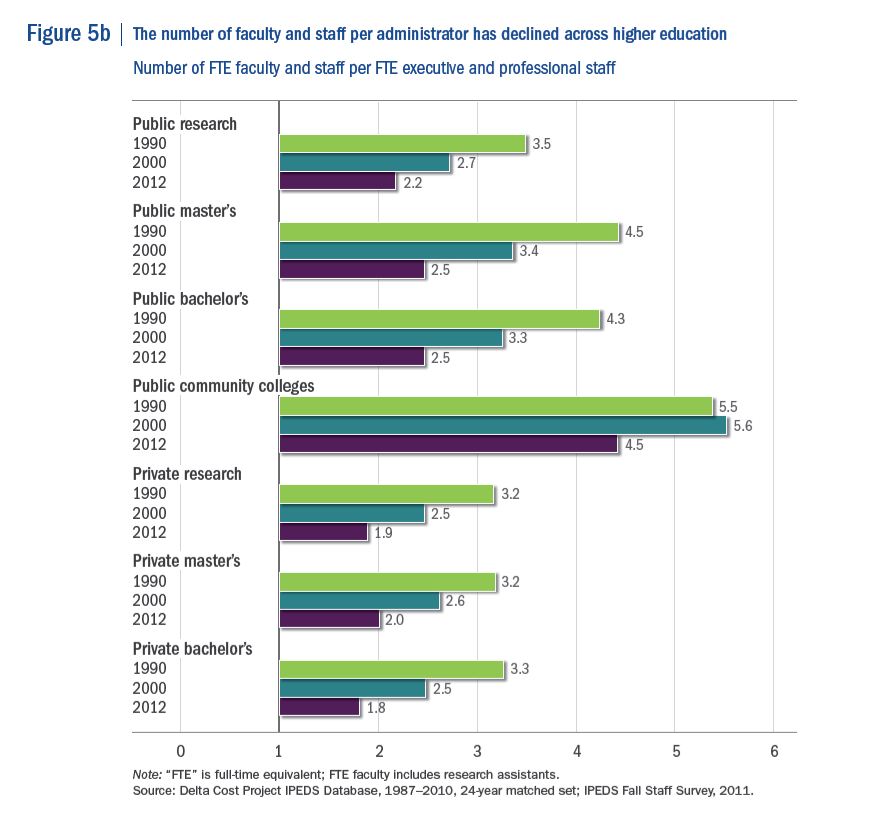Is ‘Admin Bloat’ Behind the High Cost of College?
Parents and students want to know: Who or what is to blame for the skyrocketing (up 50 percent in 10 years) cost of a college education? Some blame faculty salaries, cuts in state aid, or excessive spending. But “Administrative Bloat”— a flurry of new vice presidents, provosts, deans, and other professional workers – has been a target high on everyone’s list.
New analysis from AIR’s Delta Cost Project breaks down staffing and compensation changes in higher education and sheds new light on the role of administrative bloat in the cost of college.
Administrative positions have increased across all types of higher education institutions, from private research universities down to community colleges. But the popular notion that high-profile and highly paid managers, such as vice presidents, provosts, and deans, are driving this increase isn’t quite right. Management jobs have increased, but largely in lockstep with enrollment growth, and today they still represent the same 4-6 percent of jobs they did back in 2000 at public colleges and universities.
So where is the growth in administrative staffing coming from? A closer look at the numbers shows it’s the professional staff—for example, those working as business analysts, computer analysts, or counselors, or those staffing the human resources or admissions offices. These jobs account for roughly 20 to 25 percent of all jobs on campus, and at nonresearch colleges grew by 50-75 percent between 2000 and 2012. In 1990, at both private institutions and public research universities, full-time faculty outnumbered administrators (executive and professional staff), but by 2012, administrators outnumbered full-time faculty (see Figure 5a).

Looking across the whole campus, the number of total “full-time equivalent” (FTE) faculty and nonprofessional staff per administrator dropped roughly 40 percent between 1990 and 2012, averaging 2.5 or fewer faculty and staff per administrator (see Figure 5b).

So is this unnecessary “bloat”? Or just a reflection of the changing nature of the business of higher education? Some point to new government mandates; more complex administrative requirements (e.g. Information technology, and enhanced student services); a shift of traditional faculty responsibilities (e.g. counseling, discipline) to more formal campus-wide systems; reliance on fundraising (instead of state aid) that requires more staff to bring in the money, and, perhaps most simply, expansion of bureaucratic fiefdoms.
While the source and desirability of the rise in administrative staffing remains up for debate, our research provides additional insights:
- First, these new professional workers aren’t necessarily mired in back-office, business-related jobs. Although we can’t directly map staff to spending, the wage and salary data show that colleges and universities have increased investments in student services, suggesting many of these new professional jobs were created to assist students.
- Second, expansion of professional jobs is widespread across all types of institutions, not solely related to the complex administration of grants and contracts at research institutions. However, many administrative reporting burdens are more broadly deployed (such as reporting data to the U.S. Department of Education upon which this analysis is based).
- Finally, this broad expansion at both public and private institutions suggests a systemic change across higher education, rather than an opportunistic change related to available resources.
For more data and analysis, read the full report here.